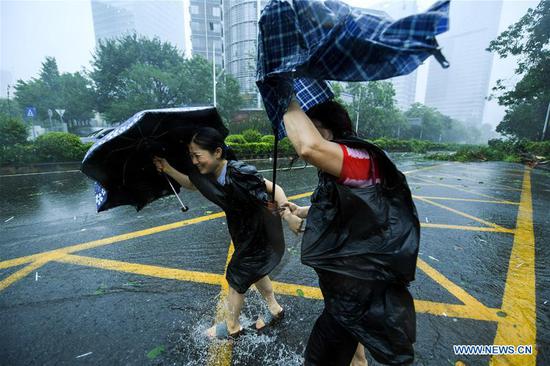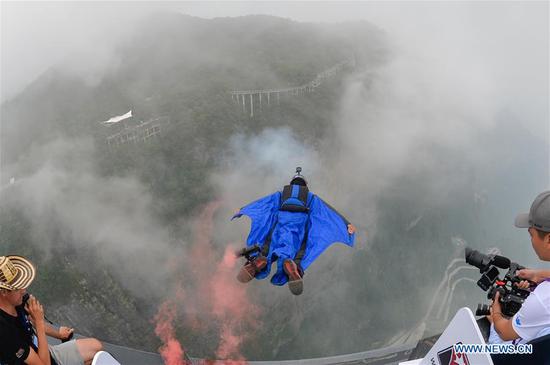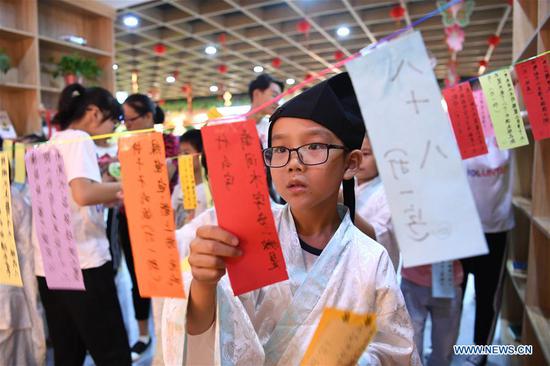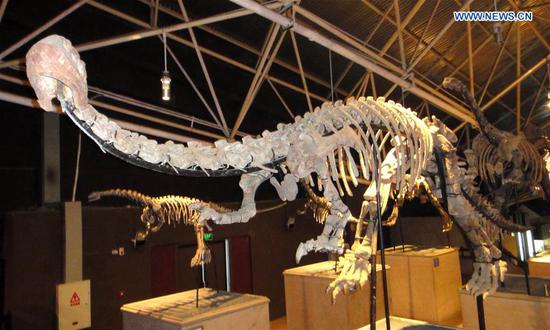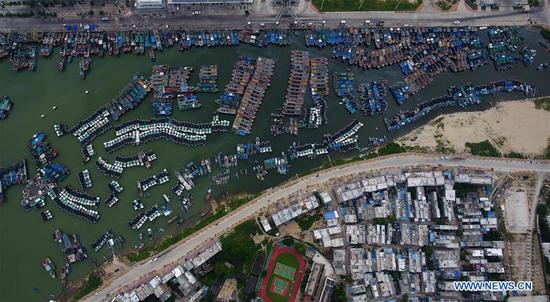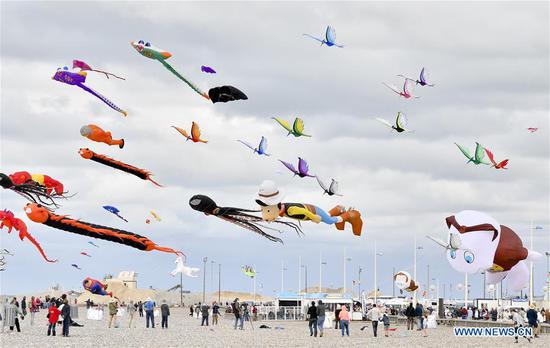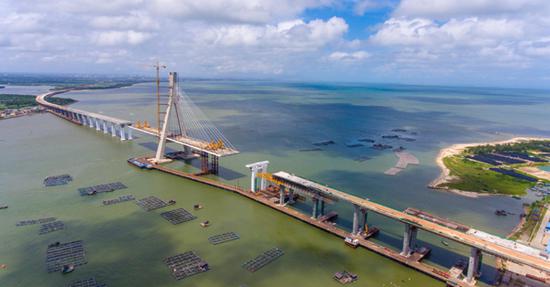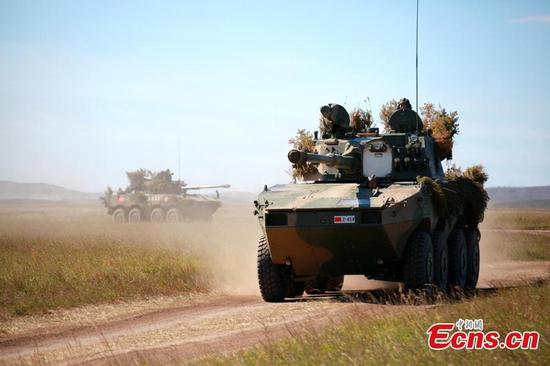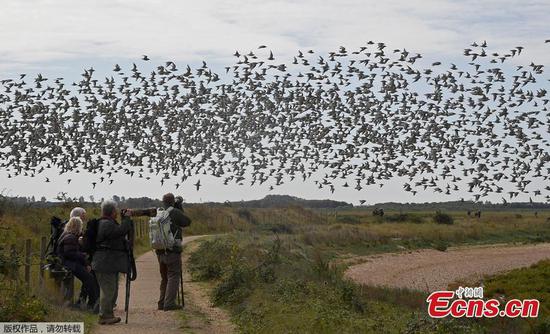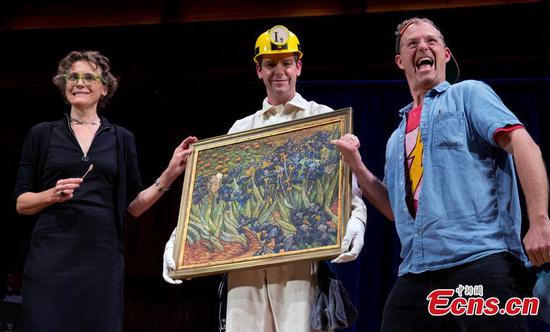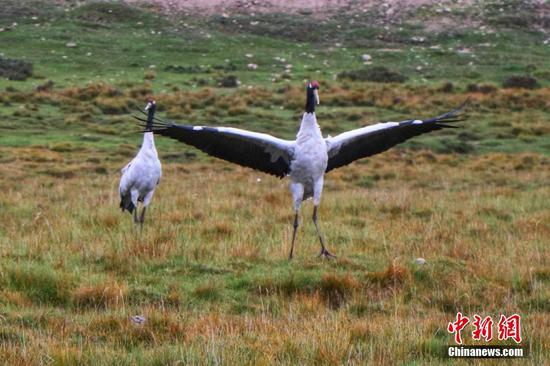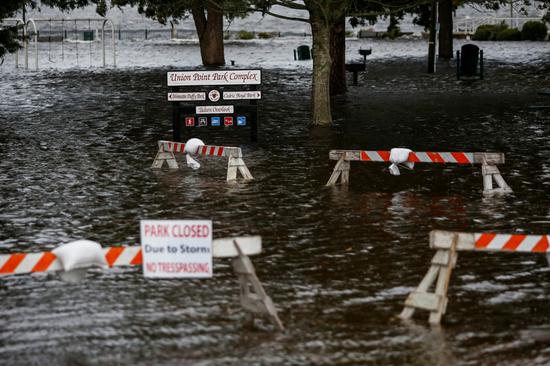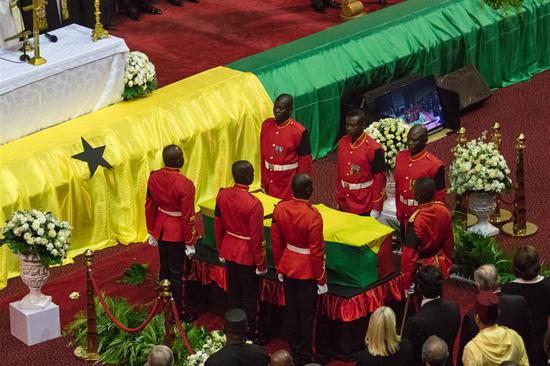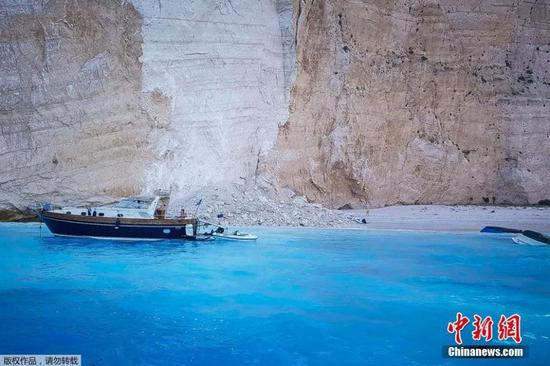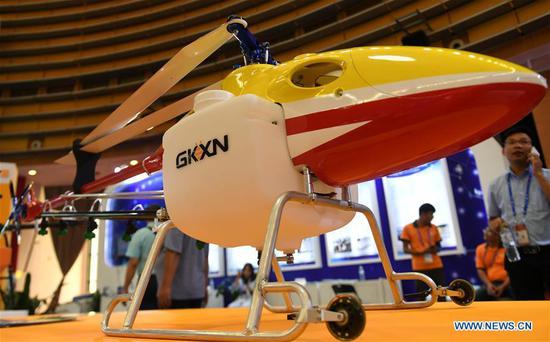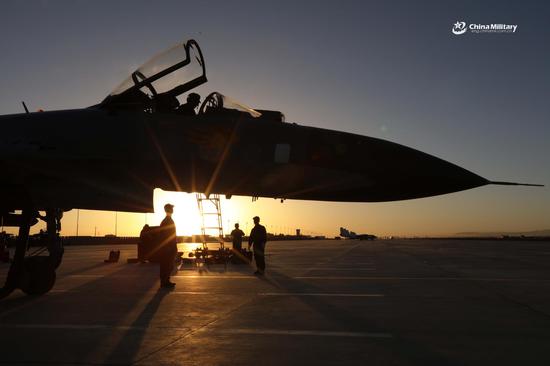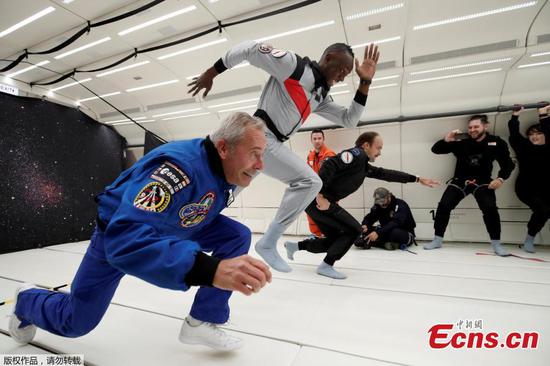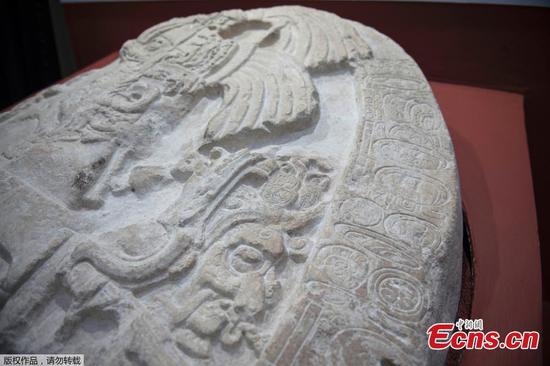Challenges in the dark
Captain Lu Zhaohui, a senior J-15 pilot at the naval aviation base, said night operations are a major part of modern naval warfare, which requires the carrier-borne fighter jet force to be capable of conducting operations in low visibility and difficult weather conditions over dark seas.
"Landing a plane on a carrier in the dark is the hardest and riskiest of all nighttime operations and much more difficult than landing during the daytime," he said. "We have overcome a lot of difficulties to enable our pilots to perform night landings. The first was that we didn't know how to arrange the lights on the carrier's deck or how bright they should be."
During the approach on a typical night landing, the pilots have no points of reference other than signal lights placed along the runway of the carrier's recovery area. The brightness of the lights is adjustable and subject to conditions such as distance and altitude, according to Lu.
In addition, members of the deck crew also use lights when handling operations on the flight deck.
"If the lights are too bright, they can cause the pilots to experience momentary blindness during takeoff or landing, which is very dangerous. If the lights are too dim, the pilots may not see them, and that could lead to accidents," he said, noting that every navy that operates aircraft carriers has experienced the same problems.
Lu, his fellow pilots and a number of deck crew commanders carried out countless experiments and tests which allowed them to devise a number of lighting protocols to fit different times and weather conditions, he added.
Captain Xu Ying, commander of the J-15 unit, noted that it is extremely difficult and dangerous to land a plane on a narrow, seaborne runway at night, since the lack of reference points can impair the pilots' sense of direction. Moreover, their ability to react and make judgments is substantially reduced when flying in total darkness above the ocean.
"We learn to depend on landing-assistance instruments on the aircraft and the carrier, and on instructions from signal officers," he said. "Our aviators need to undertake repeated training procedures in night operations to gain more experience."
Li Jie, a well-known naval researcher in Beijing, said, "As soon as a sufficient number of the carrier-borne fighter pilots are qualified to carry out round-the-clock operations, the carrier will come closer to full combat capability."
Looking ahead
China commissioned the CNS Liaoning in September 2012. Two months later, Senior Captain Dai Mingmeng landed a J-15 on the carrier's flight deck, becoming the first Chinese pilot to achieve the feat.
China has now built its second aircraft carrier and it has undergone two sea trials. The new vessel, the first to be designed domestically, is basically identical to the Liaoning but has several modifications.
In May 2013, the carrier-borne fighter jet force, the first of its kind in the PLA and one of the youngest units in the Chinese military, was established in Northeast China.
In August of the same year, President Xi Jinping, who is also chairman of the Central Military Commission, inspected the unit and observed a series of takeoffs and landings by a J-15 fighter jet at its base.
The force has now gained enough experience to shorten the time required to provide full training for J-15 pilots.
Since 2015, the unit's aviators have flown their jets in three parades, including the country's largest-ever sea parade, which was conducted in the South China Sea in April.
As a growing number of pilots have mastered the basic skills of flying carrier-borne fighter jets, they have started to move on to the next stage of their training - honing their combat maneuvers.
Sun Baosong, a captain at the naval aviation base and a J-15 veteran, said aviators now spend most of their time practicing group tactics and combat maneuvers.
He recalled a fleet defense exercise during a training operation on the Liaoning in which he and another pilot were ordered to intercept incoming aircraft.
The exercise was intense and realistic, with each side sparing no effort to beat the other.
The adversaries were tough, and they were accompanied by planes fitted with electronic-warfare systems, which made the task even tougher. In response, Sun and his fellow trainee decided to adopt an audacious but risky tactic by making a long-distance, sea-skimming penetration run to strike the "enemy's" base. They succeeded and gained useful experience in the process.
Captain Xu echoed Sun's remarks, saying a considerable proportion of his unit's training has shifted from flying skills to tactical tasks.
"Next, we will select and train more pilots for the carrier force and strengthen the combat capabilities of our current airmen," he said.
According to Sun, in addition to the force's progress, relations between the unit and the Liaoning's flight deck crew have become closer and smoother.
That has produced obvious results, and the carrier is now capable of carrying more fighter jets and can launch and recover a larger number of aircraft more efficiently. In addition, pilots and members of the carrier's crew have established specific procedures for deck operations.
"In the past five years, we have reached the East and South China seas, as well as the western Pacific Ocean. We conducted many tactical drills there and verified our capabilities," Sun said. "In the future, we will go farther and undertake more missions."
The Communist Party of China and the military have conferred many honors on members of the force as a reward for their accomplishments and contribution to national security.
In August 2014, Xi conferred the honorary title of "Heroic Test Pilot of a Carrier-borne Fighter Jet" on Senior Captain Dai, who was deputy commander of the unit's aviation base at the time. In November 2016, Xi made a posthumous award to Lieutenant Commander Zhang Chao, who died in a training accident earlier that year.
In addition to Dai and Zhang, seven members of the unit have been awarded a first-class military service citation, while others have received second-class citations.
Despite their achievements, the unit's commanders are not complacent, according to Senior Captain Zhang Zhongming, political commissar of the naval aviation base.
"The training of carrier-borne fighter jet pilots must be accelerated to pave the way for the Navy's aircraft carrier plans," he said.









